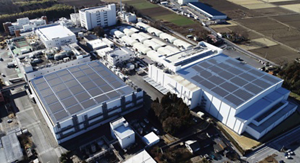- News
- Kao is aiming to reduce its CO2 Emissions to zero by 2040, and to be carbon negative by 2050

Kao is aiming to reduce its CO2 emissions to zero by 2040, and to be carbon negative by 2050
Kao has set new targets for 1.5°C Science Based Target Initiative Certification, and is aiming to join RE100
Kao has set new targets for realizing a decarbonized society and is aiming to reduce its carbon dioxide (CO2) emissions to zero by 2040, and become a carbon negative company by 2050. Consequently, Kao is now seeking to upgrade the 2.0°C target certification it was awarded by the Science Based Targets initiative (SBTi)*1 in 2019 to 1.5°C. It has also signed up to the “Business Ambition for 1.5°C” initiative, which was launched by the UN Global Compact, the SBTi, and We Mean Business. This is a corporate pledge for businesses to set science-based targets aligned with limiting global temperature rise to 1.5°C instead of 2.0°C. In addition, Kao is aiming to join RE100, an international program which brings together hundreds of large businesses committed to 100% renewable electricity.
(*1 The SBTi is an international joint initiative by the CDP, the UN Global Compact, the World Resources Institute (WRI), and the World Wide Fund for Nature (WWF). The SBTi provides science-based verification and certification as to whether the greenhouse gas reduction targets set by business enterprises are consistent with the decarbonization levels mandated by the Paris Agreement.)
The Kao Group has been working with a variety of stakeholders to reduce the environmental impact throughout their products lifecycles. In April 2019, Kao defined a sustainable lifestyle in an age of increasing consumer needs as the Kirei Lifestyle, and developed the Kirei Lifestyle Plan (KLP), aSolar panels on Kao's Tochigi plant in Japannew ESG Strategy. The Japanese word 'kirei' describes something that is both clean and beautiful. For Kao, Kirei not only encapsulates appearance, but also attitude—to create beauty for oneself, other people, and for the world around us. Mid- to long-term targets have been announced for each of the 19 “Kao Actions” as specified by the KLP, which includes decarbonization.
Recently, Kao’s responsibilities have grown as well as the role it is expected to play in relation to tackling climate change caused by global warming. In order to be able to deliver a Kirei Lifestyle not only to today’s consumers but also to the consumers of the future, Kao has set new decarbonization objectives aimed at the realization of a decarbonized society. By implementing Innovation in Reduction and Innovation in Recycling with regards to CO2, Kao is aiming to achieve carbon zero by 2040, and carbon negative 2050 in its business activities. Kao is also proceeding with the development of products, services, and technologies that will contribute towards reducing CO2 emissions in society as a whole.
The Kao Group’s new decarbonization objectives - aiming to be carbon zero by 2040, and carbon negative by 2050.
CO2 related Innovation in Reduction /Targets to achieve zero CO2 emissions by 2040
By 2030, Kao will have reduced Scope 1+2*2 CO2 emissions (absolute value) by 55% (taking 2017 as the base year) *3
*2 The volume of greenhouse gases emitted directly by business enterprises and other organizations.
*3 1.5°C target certification from the SBTi has been applied for.
By 2030, 100% of the electricity used will be sourced from renewable energy*4
Kao is aiming to join the RE100 initiative, and will continue to use renewable energy in its business practices with the adoption of photovoltaic electricity generation equipment and the purchase of electricity generated from renewable energy.
*4 Kao has applied for RE100
By 2030, Kao will have reduced CO2 emissions (absolute value) throughout the product lifecycle*5 by 22% (taking 2017 as the base year)*6
*5 The volume of CO2 emissions deriving from raw materials procurement, manufacturing, transportation, product usage, and disposal of used products.
*6 1.5°C target certification from the SBTi has been applied for.
By 2030, CO2 emissions in society as a whole will have been reduced by 10 million tons through the use of Kao products and services
In its Consumer Products business and Chemical business, Kao will promote the development of products, services, and technologies that contribute towards the sustainability of society.
CO2 related Innovation in Recycling/ Targets to achieve negative CO2 emissions by 2050
Kao will develop technology that enables CO2 to be used as a raw material.
- News
- Kao is aiming to reduce its CO2 Emissions to zero by 2040, and to be carbon negative by 2050

